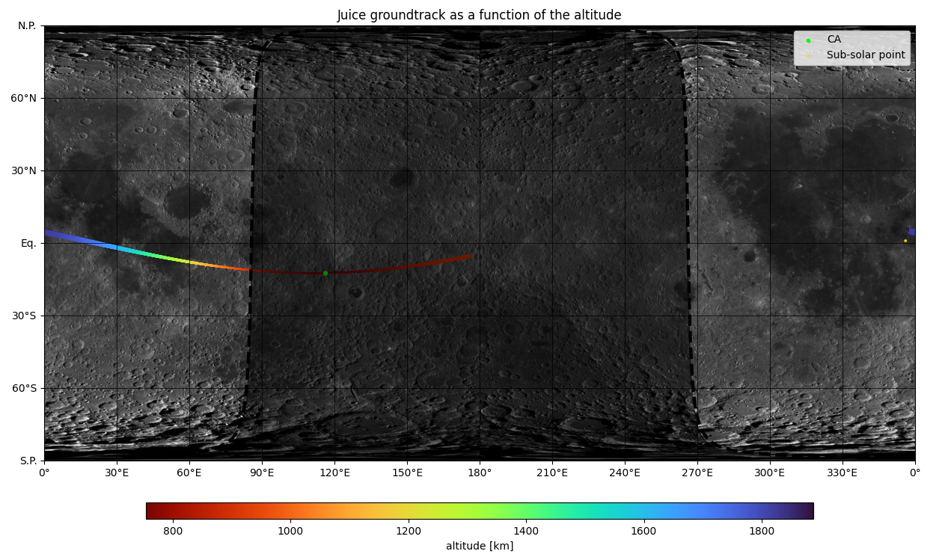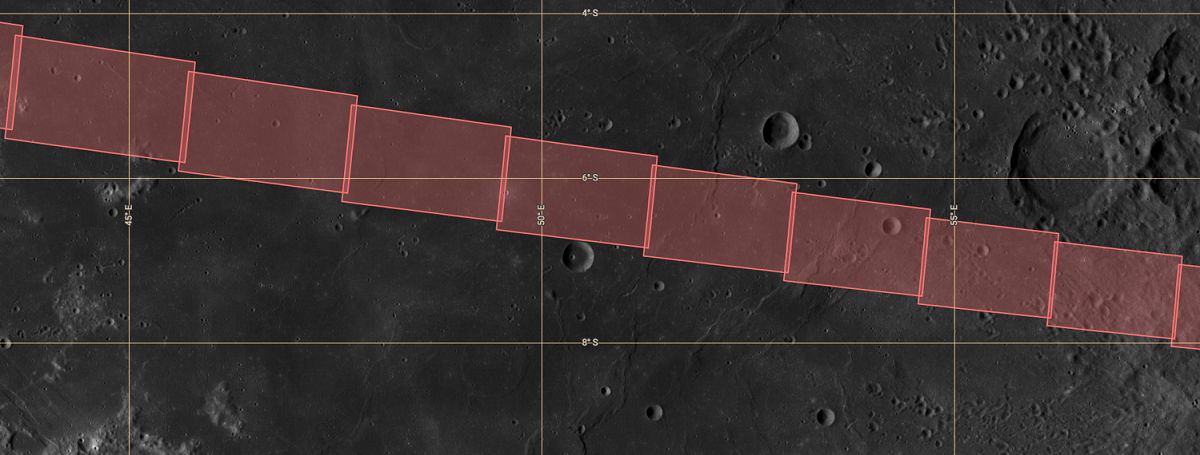- 1INAF, IAPS (Institute for Space Astrophysics and Planetology), Roma, Italy (pasquale.palumbo@inaf.it)
- 2German Aerospace Center (DLR), Institute of Planetary Research, Rutherfordstr. 2, 12489 Berlin, Germany
- 3IAA-CSIC (Instituto de Astrofísica de Andalucía - CSIC), Glorieta de la Astronomía 3, 18008 Granada, Spain
- 4School of Physical Sciences, The Open University, Milton Keynes, MK7 6AA, UK
- 5Università di Padova - CISAS Giuseppe Colombo, via Venezia 15, 35131 Padova, Italy
- 6INAF - OAPd (Osservatorio Astronomico di Padova), Vicolo Osservatorio 5, 35122, Padova, Italy
- 7Italian Space Agency, Roma, Italy
- 8INAF - OAC (Osservatorio Astronomico di Capodimonte), Napoli, Italy
- 9Freie Universität Berlin, UB-Inst.for Geosciences, Malteserstr. 74-100, 12249 Berlin, Germany
- *A full list of authors appears at the end of the abstract
JANUS (Jovis, Amorum ac Natorum Undique Scrutator) [1] is the camera system on-board the ESA JUICE mission [2]. It covers with 13 filters the 360-1080 nm wavelength range, using a CMOS detector with 2000x1504 pixel and angular sampling of 15 microrad/pixel.
After JUICE launch in April 2023, commissioning activities have been successfully performed, followed by two checkouts to verify instrument functionalities and test performances. The Lunar-Earth Gravity Assist (LEGA) manoeuvre, planned on 19-20 August 2024 (trajectory and attitude information are reported in [3]) is the first opportunity to use JUICE instruments in a similar fashion to what will be the nominal science phase in Jupiter system. In particular, the Moon fly-by at a minimum distance of 754 km, relative speed at closest approach of 4.2 km/s and Sun phase angle at closest approach of about 90 deg, mimics in some aspects a typical fly-by that will be executed on Galilean icy moons during the science phase.
On the other hand, differences do exist due to spacecraft constraints while in cruise in inner Solar System: observations of Moon and Earth from some distance, during the inbound or outbound leg are not allowed and the camera boresight will only sweep the target at constant Sun phase angle, i.e. not in nadir-looking geometry.
Being limited to the acquisition of images on a continuous strip on the target surface, JANUS observation strategy was developed to perform an in-depth check of operational capabilities, performances, calibrations, data quality and test data processing tools. Each fly-by was divided in segments in which different instrument settings will be tested: single filter imaging, multi-filter imaging and acquisitions with different compression factor.
These observations will allow the implementation and use, for the first time, of the nominal data processing pipeline including conversion from telemetry to raw data, then to calibration in physical units and finally correction for geometric distortion, rolling shutter effects and images projection.
A summary of planned observations and their scope is reported below. Figure 1 shows the JUICE ground track on Moon’s surface, while Figure 2 shows an example of possible JANUS footprints.

Figure 1: JUICE ground track on Moon’s surface. Closest approach and subsolar points are also given. As JANUS is nadir-looking only at terminator crossing, altitude and slant distances are not the same. The image has been produced using the Planetary Coverage tool [4]; background image adapted from Lunar LRO/LROC global mosaic.

Figure 2: Possible JANUS footprints from night- to day-side limb crossings (right to left). Time between footprints has been assumed equal to repetition time, i.e. no overlap is considered here. Actual observations implement multiple coverage of surface in both single filter or multi-filter images. The image has been produced using the Planetary Coverage tool [4]; background image adapted from Lunar LRO/LROC global mosaic.
The JANUS-GALA co-alignment is an attempt to observe the GALA (JUICE laser altimeter) laser spot on Moon’s surface while observing the night side. It is an inherently difficult measurement due to the marginal sensitivity by JANUS at the edge of its spectral range and due to the non-ideal geometry and limited time both instruments are allowed to operate.
After terminator crossing, dayside Moon’s surface observations are constrained by geometry, relative speed and radiometry, all giving the conditions and timing constraints for the selection of filters.
The first segment in daylight is characterized by high incidence angle and only one filter acquisition is implemented (Figure 3). Image timing allows imaging of the same surface area up to 4 times. These images allow to check the radiometry and post processing techniques to correct image smearing and improve resolution.

Figure 3: JANUS first 20 footprints after terminator crossing. Time between footprints has been assumed equal to repetition time; JANUS acquisition allows up to 4x redundancy in surface coverage along the track. Pixel scale: 13-19 m/px; Emission angle: 0.8° – 20°; Incidence angle: 89°-69°; Phase angle: 90; Distance: 2643-2887 km. The image has been produced using Moon QuickMap (https://quickmap.lroc.asu.edu/).
Within the second segment, multi-filter acquisitions allows to extend performance and calibration checks to other wavelengths while we fly over Langrenus crater. Following segments allow the use of all 13 filters. Thanks to the uniformity of the target (Figure 4), the contribution of stray-light from the surface around the JANUS field of view will be evaluated.

Figure 4: Acquisitions of all 13 filters are planned on Mare Fecunditatis. The time between two footprints allows up to 6 filters switching and acquisition. Pixel scale: 23-33 m/px; Emission angle: 28°- 41°; Incidence angle: 61°- 49°; Phase angle: 90; Distance: 3007-3189 km. The image has been produced using Moon QuickMap (https://quickmap.lroc.asu.edu/).
Additional measurements are planned to check for information loss with increasing compression factor, optical quality and stray-light from the Moon at increasing angular distance and decreasing dimensions.
Similar approach is planned for Earth observations, although the JANUS footprints on dayside fall entirely on Pacific Ocean (Figure 5) resulting in difficulties to compare JANUS data with other reference data. However, exploitation of Earth observation satellites data, possibly acquired on purpose, is considered. Being at higher altitude, image timing is less constraining allowing full multi-filter observations on all footprints.

Figure 5: JANUS footprints on Earth surface from night- to day-side limb crossing (left to right); the same comments applies on time between footprints. Footprints on dayside are those on the right of Philippines islands. Planetary Coverage tool [4] was used; image from Google Earth, Data SIO, NOAA, USNavy, NGA, GEBCO, Image Landsat / Copernicus.
Preliminary results acquired by JANUS during LEGA will be reported in view of the instrument capabilities and expected results while in Jupiter system.
Acknowledgements
Authors acknowledge support from National Space Agencies (ASI*, DLR, Spanish Research Ministry and UKSA) in the frame of JANUS-JUICE project.
* ASI-INAF agreement n. 2023-6-HH.0
References
[1] Palumbo, P., et al., (2014), LPSC Vol. 45, p. 2094; [2] Grasset, O., et al., (2013). PSS, 78, 1-21; [3] JUICE mission Operational SPICE Kernel Dataset, DOI:10.5270/esa-ybmj68p [4] Seignovert , B. et al. 2023, Planetary coverage package (1.1.0), planetary-coverage.org.
Pasquale Palumbo, Ganna Portyankina, Thomas Roatsch, Luisa Maria Lara, Manish Patel, Cecilia Tubiana, Alessio Aboudan, Livio Agostini, Luca Penasa, Alice Lucchetti, Klaus-Dieter Matz, Romolo Politi, Frank Trauthan, Angelo Zinzi, Jose Maria Castro-Marin, Vincenzo Della Corte, Stubbe Hviid, Ralf Jaumann, Harald Michaelis, Nicole Schmitz, Christian Althaus, Fernando Álvarez, Michael Aye, Mirco Bartolomei, Thomas Behnke, Thomas Bilotta, Giacomo Colombatti, Antonio Colosimo, Athena Coustenis, Gabriele Cremonese, Chiaki Crews, Alessandro Dattolo, Tilmann Denk, Bjorn Fiethe, Miguel Herranz, Olaf Hillenmaier, Ricardo Hueso, Alexander Koncz, Jaime Jimenez-Ortega, Alexander Lichopoj, Lorenzo Livi, Xavi Llamas, Ignacio Martinez-Navajas, Elena Mazzotta Epifani, Volker Mertens, Maurizio Pajola, Francesco Sarti, Rolf Schroedter, Katrin Stephan, Federico Tosi, Belinda Wendler, Dennis Wendler, Friederike Wolff, Michele Zusi, Sebastiano Chiodini, Iacopo Ficai Veltroni, Antonio Jesus García-Segura, Davide Greggio, Thomas Kenkmann, Demetrio Magrin, Harald Michalik, Matteo Munari, Giovanni Enrico Noci, Mark Leese, Riccardo Paolinetti, Pietro Schipani, Mattew Soman, Konstantin Stefanov, Andrea Turella, Oded Aharonson, Jim Bell III, Ivano Bertini, Andrew Coates, Gaetano Di Achille, Davide Grassi, Olivier Groussin, Klaus Gwinner, Junichi Haruyama, Ernst Hauber, Harald Hiesinger, Yves Langevin, Valery Lainey, Rosaly Lopes, Simone Marchi, Lucia Marinangeli, Francesco Marzari, Matteo Massironi, Giuseppe Mitri, Stefano Mottola, Jurgen Oberst, Frank Postberg, Francois Poulet, Frank Preusker, Juergen Schmidt, Nick Schneider, Amy Simon, Yukihiro Takahashi, Daniela Tirsch, Mathieu Vincendon, Mattew Balme, Carlo Bettanini, Patrizia Borin, Stephan Elgner, Francesca Esposito, Luigi Ferranti, Sabrina Ferrari, Sonia Fornasier, Valentina Galluzzi, Lorenza Giacomini, Andrew Griffiths, Laura Guzzetta, Geraint Jones, Elke Kersten, Laetitia Ledeit, Elena Martellato, Vito Mennella, Carl Murray, Katrin Otto, Maria Pelizzo, Ciprian Popa, Riccardo Pozzobon, Olga Prieto Ballesteros, Cristina Re, Alessandra Rotundi, Mitsuo Sato, Nico Schmedemann, Daigo Shoji, Emanuele Simioni, Giuseppe Sindoni, David Williams, Yoav Yair.
How to cite: Palumbo, P., Portyankina, G., Roatsch, T., Lara, L. M., Patel, M., Tubiana, C., Aboudan, A., Agostini, L., Penasa, L., Lucchetti, A., Matz, K.-D., Politi, R., Trauthan, F., Zinzi, A., Castro-Marin, J. M., Della Corte, V., Hviid, S., Jaumann, R., Michaelis, H., and Schmitz, N. and the JANUS team: Observations of the Earth-Moon system by the JANUS camera for JUICE mission, Europlanet Science Congress 2024, Berlin, Germany, 8–13 Sep 2024, EPSC2024-300, https://doi.org/10.5194/epsc2024-300, 2024.